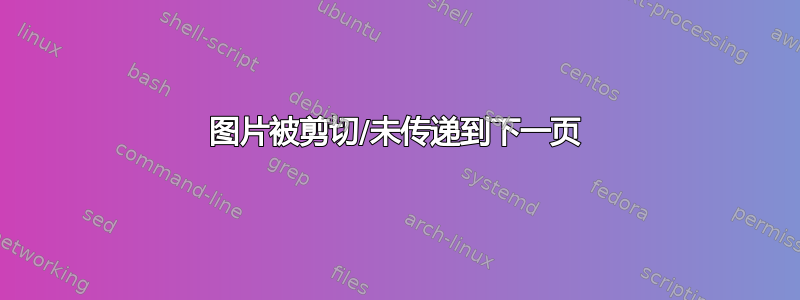
代码如下:
\begin{figure}[h!]
\centering
\begin{subfigure}[t]{1\textwidth}
\centering
\begin{tikzpicture}
\draw
(0,0) coordinate(v0) {}
(v0)--++(0,2) coordinate(v2)
(v2)--++(2,0) coordinate(v3)
(v3)--++(0,-2) coordinate(v4)
(v4)++(-2,0) coordinate(v5)
(v4)--(v5) node[pos=0.5,below=0.2cm]{Subestação 1}
(v0)++(4,3) coordinate(v6)
(v6)--++(2,1) coordinate(v7)
(v0)++(1.8,1.5) coordinate(v8)
(v8)--++(1,-0.3) coordinate(v9)
(v9)--++(-1,-0.7) coordinate(v10)
(v9)--++(-1,-0.4) coordinate(v11)
(v9)--++(4,0.1) coordinate(v12)
(v12)--++(4,0.5) coordinate(v13)
(v13)++(0.5,-1.75) coordinate(v14) {}
(v14)--++(0,3) coordinate(v15)
(v15)--++(1,0) coordinate(v16)
(v16)--++(0,-3) coordinate(v17)
(v17)--++(-1,0) coordinate(v18)
(v17)--(v18) node[pos=0.5,below=0.1cm]{Subestação 2}
(v0)++(2.5,0.1) coordinate(v20)
(v20)--++(1,0.3) coordinate(v21)
(v21)--++(8,0.2)
;
\end{tikzpicture}
\caption{Uma subestação pode estar ligada a outra subestação apenas por uma linha de transmissão.}
\vspace{0.03\textwidth}
\end{subfigure}
\begin{subfigure}[t]{1\textwidth}
\centering
\begin{tikzpicture}
\draw
(0,0) coordinate(v0) {}
(v0)++(0,2) coordinate(v2)
(v2)++(2,0) coordinate(v3)
(v3)++(0,-2) coordinate(v4)
(v4)++(-2,0) coordinate(v5);
\draw [blue] (v0)--(v2);
\draw [blue] (v2)--(v3);
\draw [blue] (v3)--(v4);
\draw [blue] (v4)--(v5) node[pos=0.5,below=0.2cm]{Subestação 1};
\draw
(v0)++(4,3) coordinate(v6)
(v6)--++(2,1) coordinate(v7)
(v0)++(1.8,1.5) coordinate(v8)
(v8)--++(1,-0.3) coordinate(v9)
(v9)--++(-1,-0.7) coordinate(v10)
(v9)--++(-1,-0.4) coordinate(v11)
(v9)--++(4,0.1) coordinate(v12)
(v12)--++(4,0.5) coordinate(v13)
(v13)++(0.5,-1.75) coordinate(v14) {}
(v14)--++(0,3) coordinate(v15)
(v15)--++(1,0) coordinate(v16)
(v16)--++(0,-3) coordinate(v17)
(v17)--++(-1,0) coordinate(v18)
(v17)--(v18) node[pos=0.5,below=0.1cm]{Subestação 2}
(v0)++(2.5,0.1) coordinate(v20)
(v20)--++(1,0.3) coordinate(v21)
(v21)--++(8,0.2)
;
\end{tikzpicture}
\caption{Uma subestação pode estar ligada a outra subestação apenas por uma linha de transmissão.}
\vspace{0.03\textwidth}
\end{subfigure}
\begin{subfigure}[t]{1\textwidth}
\centering
\begin{tikzpicture}
\draw
(0,0) coordinate(v0) {}
(v0)++(0,2) coordinate(v2)
(v2)++(2,0) coordinate(v3)
(v3)++(0,-2) coordinate(v4)
(v4)++(-2,0) coordinate(v5);
\draw [blue] (v0)--(v2);
\draw [blue] (v2)--(v3);
\draw [blue] (v3)--(v4);
\draw [blue] (v4)--(v5) node[pos=0.5,below=0.2cm]{Subestação 1};
\draw
(v0)++(4,3) coordinate(v6)
(v6)++(2,1) coordinate(v7);
\draw [green] (v6)--(v7);
\draw
(v0)++(1.8,1.5) coordinate(v8)
(v8)--++(1,-0.3) coordinate(v9)
(v9)--++(-1,-0.7) coordinate(v10)
(v9)--++(-1,-0.4) coordinate(v11)
(v9)--++(4,0.1) coordinate(v12)
(v12)--++(4,0.5) coordinate(v13)
(v13)++(0.5,-1.75) coordinate(v14) {}
(v14)--++(0,3) coordinate(v15)
(v15)--++(1,0) coordinate(v16)
(v16)--++(0,-3) coordinate(v17)
(v17)--++(-1,0) coordinate(v18)
(v17)--(v18) node[pos=0.5,below=0.1cm]{Subestação 2}
(v0)++(2.5,0.1) coordinate(v20)
(v20)--++(1,0.3) coordinate(v21)
(v21)--++(8,0.2)
;
\end{tikzpicture}
\caption{Uma subestação pode estar ligada a outra subestação apenas por uma linha de transmissão.}
\vspace{0.03\textwidth}
\end{subfigure}
\begin{subfigure}[t]{1\textwidth}
\centering
\begin{tikzpicture}
\draw
(0,0) coordinate(v0) {}
(v0)++(0,2) coordinate(v2)
(v2)++(2,0) coordinate(v3)
(v3)++(0,-2) coordinate(v4)
(v4)++(-2,0) coordinate(v5);
\draw [blue] (v0)--(v2);
\draw [blue] (v2)--(v3);
\draw [blue] (v3)--(v4);
\draw [blue] (v4)--(v5) node[pos=0.5,below=0.2cm]{Subestação 1};
\draw
(v0)++(4,3) coordinate(v6)
(v6)--++(2,1) coordinate(v7)
(v0)++(1.8,1.5) coordinate(v8)
(v8)++(1,-0.3) coordinate(v9);
\draw [green] (v8)--(v9);
\draw
(v9)--++(-1,-0.7) coordinate(v10)
(v9)--++(-1,-0.4) coordinate(v11)
(v9)--++(4,0.1) coordinate(v12)
(v12)--++(4,0.5) coordinate(v13)
(v13)++(0.5,-1.75) coordinate(v14) {}
(v14)--++(0,3) coordinate(v15)
(v15)--++(1,0) coordinate(v16)
(v16)--++(0,-3) coordinate(v17)
(v17)--++(-1,0) coordinate(v18)
(v17)--(v18) node[pos=0.5,below=0.1cm]{Subestação 2}
(v0)++(2.5,0.1) coordinate(v20)
(v20)--++(1,0.3) coordinate(v21)
(v21)--++(8,0.2)
;
\end{tikzpicture}
\caption{Uma subestação pode estar ligada a outra subestação apenas por uma linha de transmissão.}
\vspace{0.03\textwidth}
\end{subfigure}
\begin{subfigure}[t]{1\textwidth}
\centering
\begin{tikzpicture}
\draw
(0,0) coordinate(v0) {}
(v0)--++(0,2) coordinate(v2)
(v2)--++(2,0) coordinate(v3)
(v3)--++(0,-2) coordinate(v4)
(v4)++(-2,0) coordinate(v5)
(v4)--(v5) node[pos=0.5,below=0.2cm]{Subestação 1}
(v0) ++(1.5,0.4) coordinate(v6)
(v6)++(2,-1) coordinate(v7)
(v7)++(2,2) coordinate(v8)
(v8)++(3,0.5) coordinate(v9);
\draw [red] (v6)--(v7) node[red,pos=0.8,above=0.25cm]{Linha 1};
\draw [blue] (v7)--(v8) node[blue,pos=0.8,below=0.7cm]{Linha 2};
\draw [green] (v8)--(v9) node[green,pos=0.4,above=0.2cm]{Linha 3};
\draw
(v9) ++(-0.5,-2) coordinate(v10)
(v10)--++(0,3) coordinate(v11)
(v11)--++(1,0) coordinate(v12)
(v12)--++(0,-3) coordinate(v13)
(v13)++(-1,0) coordinate(v14)
(v13)--(v14) node[pos=0.5,below=0.1cm]{Subestação 2};
\end{tikzpicture}
\caption{Uma subestação pode estar ligada a outra subestação por uma sequência de linhas de transmissão.}
\end{subfigure}
\caption{Duas formas possíveis em como uma ligação subestação - subestação pode ser feita no \glsxtrshort{osm}.}
\label{segmentoapossegmento}
\end{figure}
输出如下:
我想让最后一个子图继续到下一页而不被剪切,我该如何实现?
答案1
正如@DavidCarlisle 在评论中指出的那样,figure环境的内容不能跨页面拆分。现在,既然您使用了该subcaption包,那么一个简单的修复方法就很容易了:机械\ContinuedFloat。我建议您插入
\end{figure}
\begin{figure}[t!]
\ContinuedFloat
\caption*{\figurename\ \thefigure, cont'd}
在第三个(或第四个,取决于可用空间)subfigure环境之后。
此外,由于图形材料现在分为两页,我还建议您将总体\caption说明放在第一个环境的顶部figure,而不是将其放在(现在的)第二个环境的底部figure。
为了集中关注格式问题的结构,我已消除了以下屏幕截图中的所有 tikZ 代码。
\documentclass[demo]{article} % remove 'demo' option in real document
\usepackage{graphicx,subcaption,lipsum}
\usepackage[T1]{fontenc}
\usepackage[portuguese]{babel} % or 'brazilian'?
\begin{document}
\lipsum % filler text
\begin{figure}[p!]
\caption{Duas formas possíveis em como uma ligação subestação - subestação pode ser feita no \glsxtrshort{osm}.}
\label{segmentoapossegmento}
\begin{subfigure}{1\textwidth}
\includegraphics[width=\textwidth]{figa}
\caption{Uma subestação pode estar ligada a outra subestação apenas por uma linha de transmissão.}
\label{segmentoapossegmento:a}
\end{subfigure}
\vspace{0.02\textheight}
\begin{subfigure}{1\textwidth}
\includegraphics[width=\textwidth]{figb}
\caption{Uma subestação pode estar ligada a outra subestação apenas por uma linha de transmissão.}
\label{segmentoapossegmento:b}
\end{subfigure}
\vspace{0.02\textheight}
\begin{subfigure}{1\textwidth}
\includegraphics[width=\textwidth]{figc}
\caption{Uma subestação pode estar ligada a outra subestação apenas por uma linha de transmissão.}
\label{segmentoapossegmento:c}
\end{subfigure}
\end{figure}
\begin{figure}[t!]
\ContinuedFloat
\caption*{\figurename\ \thefigure, cont'd}
\begin{subfigure}[t]{1\textwidth}
\includegraphics[width=\textwidth]{figd}
\caption{Uma subestação pode estar ligada a outra subestação apenas por uma linha de transmissão.}
\label{segmentoapossegmento:d}
\end{subfigure}
\vspace{0.02\textheight}
\begin{subfigure}[t]{1\textwidth}
\includegraphics[width=\textwidth]{fige}
\caption{Uma subestação pode estar ligada a outra subestação por uma sequência de linhas de transmissão.}
\label{segmentoapossegmento:e}
\end{subfigure}
\end{figure}
\lipsum % more filler text
\end{document}




